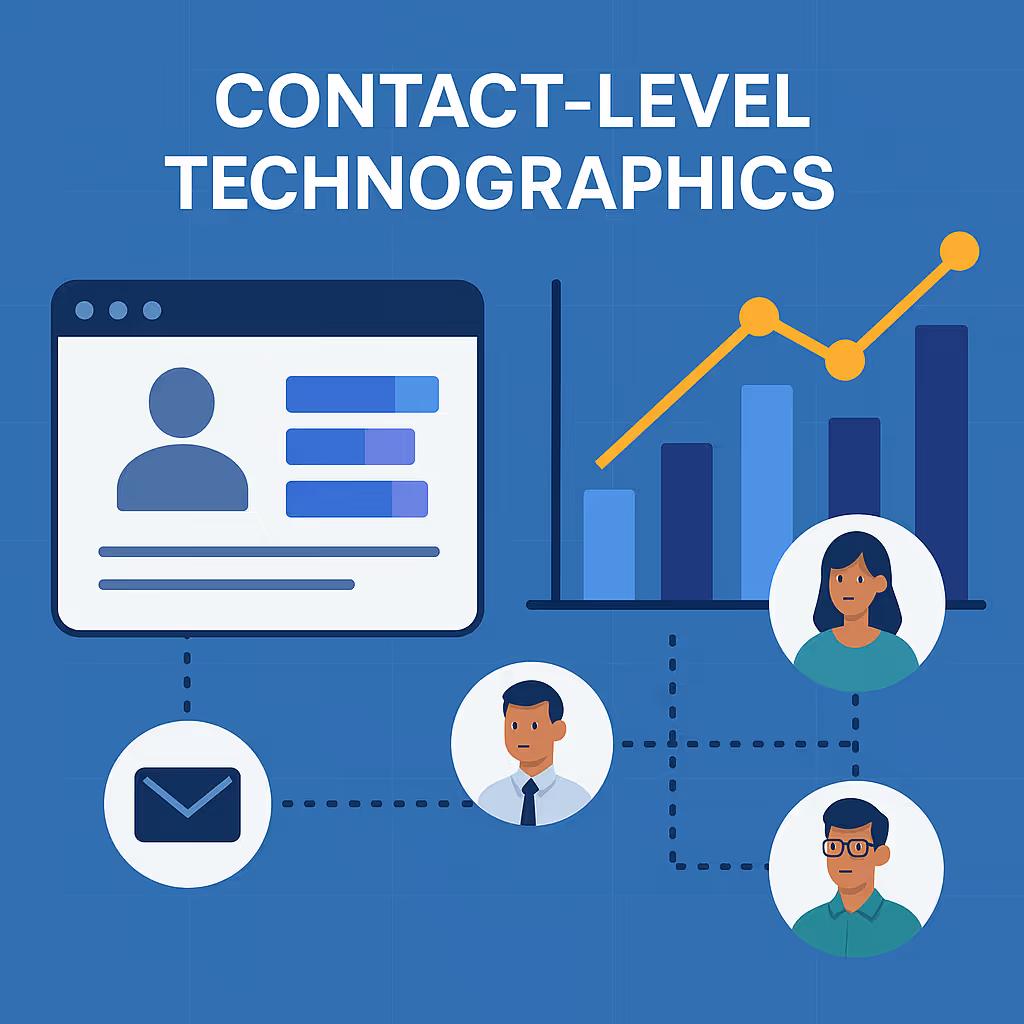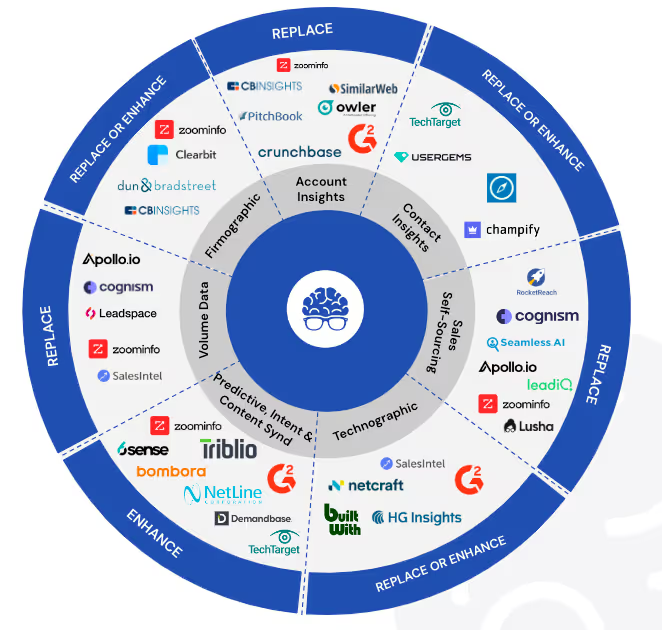Entity Resolution (ER) is the process of identifying and linking multiple records that refer to the same real-world entity, such as a person, organization, address, or device, from diverse and disparate data sources. This capability is crucial for organizations aiming to create a unified, accurate view of their data, thereby enhancing decision-making and operational efficiency.
Importance of Entity Resolution for Targeting Small Businesses
Unified Customer Profiles
- Legal Names vs. DBAs: Small businesses often have multiple names, making it challenging to match records accurately. For example, a business might be legally registered as "John's Enterprises LLC" but operate publicly as "John's Coffee Shop." Entity Resolution can reconcile these differences by integrating additional data points such as EIN numbers, physical addresses, and names of corporate officers.
- Digital Breadcrumbs: Using digital artifacts like email addresses, phone numbers, and social media profiles, Entity Resolution can create comprehensive and accurate customer profiles.
Enhanced Data Quality
- Eliminating Duplicates: Duplicate records are a common issue that can obscure insights and lead to inefficient marketing efforts. Entity Resolution ensures that all records referring to the same entity are merged, providing a single source of truth.
- Filling in Gaps: By connecting disparate data sources, Entity Resolution can fill in missing information, enhancing the completeness and reliability of data.
Improved Targeting and Personalization
- Accurate Contact Information: With a unified view, companies can access precise contact details, enabling more effective outreach and personalized marketing campaigns.
- Contextual Insights: Understanding the full context of a small business’s operations, including their legal structure and DBA names, allows for more tailored and relevant communications.
Operational Efficiency
- Streamlined Processes: By reducing the time and effort needed to reconcile and verify data, Entity Resolution enables more efficient operations, freeing up resources for strategic activities.
- Automated Decision-Making: Accurate and unified data supports AI-driven decision-making, enhancing everything from customer onboarding to risk assessment.

E-Commerce Example: Amazon Storefronts vs. Shopify Storefronts
Consider an e-commerce business that operates under different names across platforms. For instance, an Amazon Storefront might be listed as "Best Gadgets Online," while the same business might have a Shopify storefront named "Gadget Hub." The only common data points between these platforms could be the products they offer and the brand name. Traditional data matching methods might not recognize these as the same business, but Entity Resolution can link these records by examining product catalogs, brand names, and other digital breadcrumbs.
This linkage provides a complete picture of the business, enabling more effective marketing and sales strategies. By understanding that "Best Gadgets Online" and "Gadget Hub" are the same entity, a company can consolidate its outreach efforts, offer personalized promotions, and enhance customer service.
Franchise Example: Identifying Large Ownership Groups
In the case of franchises, such as McDonald's, different locations might be operated under various legal entities. For instance, 30 McDonald's locations could be managed by "XYZ Foods LLC" while another 20 are under "ABC Enterprises Inc." Identifying these as part of the same ownership group requires analyzing corporate officers, EIN numbers, and registered company names.
Entity Resolution can uncover these connections, which is critical for building effective sales territories and strategies. By identifying that 750 locations are actually controlled by the 30 largest ownership groups, a sales team can prioritize high-value targets, tailor their pitches, and allocate resources more efficiently. This approach not only improves sales effectiveness but also enhances relationship management with key franchise operators.
Example: Leveraging Entity Resolution to Target Small Businesses
Imagine you are targeting small cafes and eateries for a marketing campaign. You have a list of businesses that includes "John's Enterprises LLC" and "John's Coffee Shop." Without Entity Resolution, these might appear as two separate entities. However, by integrating EIN numbers, physical addresses, and digital breadcrumbs (such as corporate officers' names and social media handles), Entity Resolution links these records, revealing that they are indeed the same business.
This unified view provides you with complete contact information, a better understanding of the business's operations, and more accurate insights into their needs and behaviors. As a result, your marketing efforts can be more targeted and effective, increasing the likelihood of engagement and conversion.
Considerations When Using Entity Resolution
- Data Source Integration:
- Variety of Sources: Small businesses may use various eCommerce platforms, CRMs, and other tools. Integrating these sources is crucial for effective entity resolution.
- Data Formats: Different platforms may store data in various formats, requiring robust data transformation capabilities.
- Data Quality and Consistency:
- Incomplete Data: Small businesses may have inconsistent or incomplete data records. Ensuring data quality is a key challenge.
- Data Accuracy: Maintaining data accuracy across different sources is essential for reliable entity resolution.
- Scalability and Performance:
- Handling Volume: As the number of entities and data sources grows, the entity resolution process must scale efficiently.
- Performance Optimization: Ensuring the process runs smoothly and quickly, even with large datasets, is critical.
- Privacy and Security:
- Data Sensitivity: Handling sensitive customer data requires stringent privacy and security measures.
- Compliance: Ensuring compliance with data protection regulations (e.g., GDPR, CCPA) is paramount.
Challenges in Entity Resolution
- Complex Matching Algorithms:
- Fuzzy Matching: Dealing with variations in entity names, addresses, and other attributes requires sophisticated matching algorithms.
- High Computational Requirements: The complexity of matching algorithms can be computationally intensive, especially for large datasets.
- Data Diversity:
- Heterogeneous Data: Different platforms may have varying data structures and standards, complicating the resolution process.
- Dynamic Data: Data is constantly changing, requiring continuous monitoring and updating of resolved entities.
- Error Handling:
- False Positives and Negatives: Incorrect matches (false positives) or missed matches (false negatives) can undermine the accuracy of the resolution process.
- Manual Intervention: Often, human oversight is needed to validate and correct matches, adding to the complexity and cost.
Role of Entity Resolution in Deduplication and Territory Planning
- Deduplication:
- Identifying Duplicates: Entity resolution is crucial for identifying and merging duplicate records within datasets, ensuring a single source of truth.
- Data Cleanliness: Deduplication leads to cleaner, more reliable data, which is essential for accurate reporting and analytics.
- Territory Planning:
- Accurate Market Segmentation: By consolidating data, businesses can more accurately segment markets and territories based on unified entity information.
- Optimized Resource Allocation: Understanding the true distribution of entities across territories helps in allocating resources more effectively, ensuring sales and marketing efforts are properly targeted.
Resolution on Entity Resolution
Entity Resolution is a powerful tool that transforms disparate data points into a coherent, accurate view of entities. For organizations targeting small businesses, this capability is invaluable. It resolves the discrepancies between legal names and DBAs, leverages digital breadcrumbs to build comprehensive profiles, and enhances data quality and operational efficiency. As the adoption curve slows and markets mature, the ability to accurately target and engage small businesses will be a critical differentiator, and Entity Resolution will be at the forefront of this capability.
Additionally, in the realm of e-commerce and franchise data, Entity Resolution can bridge gaps between various operating names and structures, providing a unified view that supports better sales strategies and territory planning. Identifying large ownership groups among franchisees or linking different storefronts under a single brand allows businesses to optimize their outreach and make more informed decisions.




